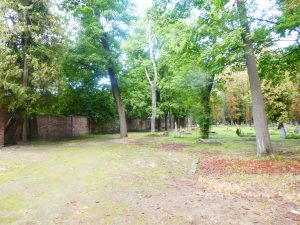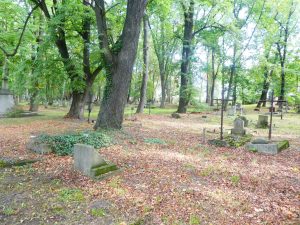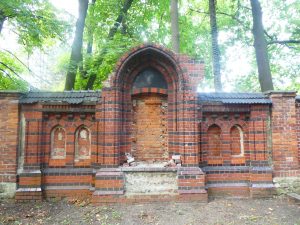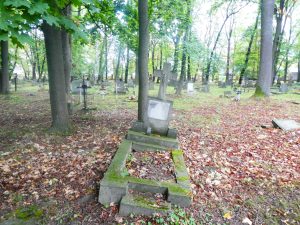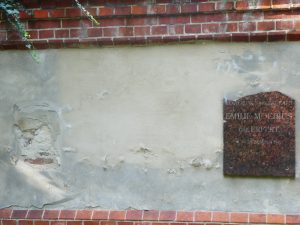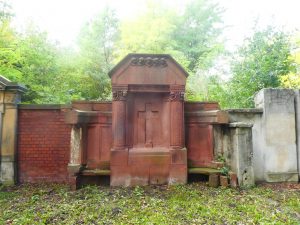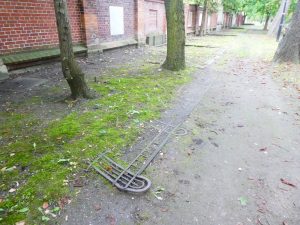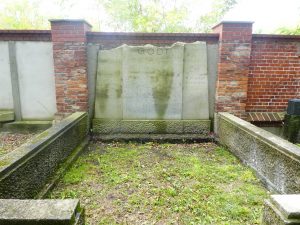Opole – Opole Cemetery
This cemetery, on ul. Wrocławska, was opened in 1813 and burials continued here until 1968. It was opened because of the fear of an epidemic spreading from the city’s existing graveyards and this cemetery was extended numerous times during the nineteenth century.
Unfortunately, it’s not in the best of shape as there has been vandalism, theft and as the icing on the cake, the cemetery has suffered from extensive flooding. The cemetery records have also been destroyed and so it’s not the tranquil environment that was perhaps once intended.
The cemetery is still of a large size, although a small section was lopped off the edge when the authorities wanted to build a new road over the river.
There have been some efforts recently to tidy the area up, so although the gravestones are in a poor state of repair, the graveyard itself is looking better.
This looks Germanic, so probably late nineteenth century, but there’s no remaining evidence of who was buried here. Opole was German until 1945, albeit with a Polish minority, so many of the burials here were German families. Unfortunately, that later on meant that some people thought it was acceptable to damage and vandalise them. In 1945, the Germans living in Opole were nearly all expelled, so families wouldn’t have been able to tend the graves of their friends and relatives.
This isn’t my poor camera skills, more some sinking into the ground of a grave.
The gravestone of Emilie Moebius, who lived from 16 December 1847 until 27 January 1893. Her husband, Paul Moebius, was an important figure in the local council, although his stone isn’t visible and I guess is what was smashed off the wall.
This is the impressive tomb of Paul Vogt, who lived from 20 February 1855 until 19 May 1905. He was a lawyer and city councillor (and chairman of the council for a time) and there was once a street in the city named after him.
This was once the decorative metal edge to one of the plots, but it has now fallen and become part of the path.
Another damaged tomb, this one for the Godt family.
There are, although unfortunately not marked, thirty military burials of British soldiers at the cemetery. They died, mainly of illness, whilst enforcing the plebiscite which was taking place in 1921 which would determine the future of Silesia. There were 41 burials here of British servicemen, but the Imperial War Graves Commission could only take responsibility for those who died before what was considered the official ending of the First World War, so eleven servicemen were exhumed and given new graves at Stahnsdorf Cemetery near Potsdam whilst the other thirty remained in Opole. The story of this can be found at https://www.ww1cemeteries.com/opole-town-cemetery.html.

